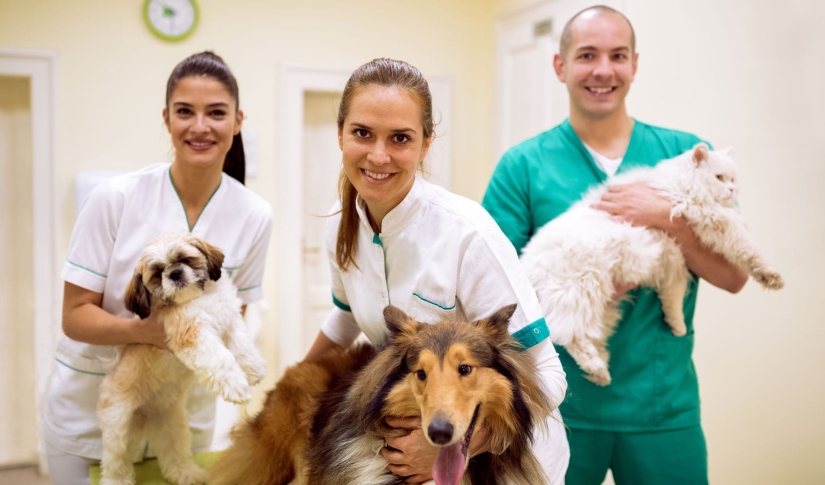What The Best Practices Do Differently: 7 Veterinary Success Strategies

Operating a successful veterinary business starts with a clear vision, defined goals, and a strategic approach to achieving them. Although the industry is competitive, it’s also collaborative and creative, which means that all practice types and styles can find their place.
However, not all practices are equally successful. The best practices know who they are, where they are going, and how to practice high-quality medicine without sacrificing excellent client care.
While every hospital and team is different, the most successful veterinary practices apply key veterinary success strategies to maximize profitability. Here's what the top veterinary teams do differently, and how you can use these best practices in your own hospital.
1. The best veterinary practices know who they are and what they want
A basic veterinary success strategy is to establish and continually evaluate your vision, mission, values, and goals. High-performing veterinary practices embrace strategic planning, starting with a strong business plan. If you’re a new practice owner or looking to rebrand your clinic, determine the niche or need you want to fill in the community. Then, define what success looks like for you and your team, and enact a plan to achieve it.
2. The best veterinary practices invest in well-being and growth
The most successful veterinary clinics prioritize the well-being of their team members. People are the glue that holds your practice together, and you should take care of them. This includes supporting a sustainable work-life balance, promoting mental health, and investing in ongoing continuing education for personal and professional growth.
Training opportunities help develop and retain veterinary technicians, directly contributing to profitability. Inexpensive CE programs are available through the AVMA or state associations to keep skills sharp and ensure top-quality patient care without impacting the clinic’s bottom line.
3. The best veterinary practices optimize the client experience
Exceptional patient care is a key aspect of successful veterinary practices, but it goes unnoticed if clients aren’t treated with the same respect and care as their pets. Optimizing the client experience requires thinking like a pet owner and implementing systems that support client retention and engagement.
Digital tools, including cloud-based veterinary practice management software and client communication portals, can provide the seamless experience clients want. Additionally, leadership teams can work to establish a service-oriented culture to encourage team members to go above and beyond.
4. The best veterinary practices use proven marketing strategies
High-performing vet practices use a mix of tactics to attract new clients and stay top of mind with existing ones. They have a cohesive veterinary marketing plan, instead of relying on sporadic advertising or other efforts.
Marketing is a veterinary success strategy that can provide a huge return on investment when you use it wisely. For most teams, this means—at a minimum—optimizing and updating their website, posting regularly on social media, and encouraging reviews, testimonials, and word-of-mouth referrals from satisfied clients.
5. The best veterinary practices leverage technology
Technology use is a powerful veterinary success strategy that can dramatically reduce busywork and mistakes in practice. The right tools can help teams become more efficient and organized with simpler workflows and more effective communication.
Modern, cloud-based veterinary software is the foundation of every high-tech veterinary practice. These systems offer endless customization opportunities within the software and through third-party integrations, enabling online booking, flexible payment options, automated communications, and more. AI-powered diagnostic systems, medical record scribes, and telehealth or consulting platforms are additional examples of valuable technologies.
6. The best veterinary practices know where they stand
Successful veterinary practices have leaders who track key performance metrics and know exactly where the hospital stands financially. The average practice owner has minimal training in accounting and financial management for a business as complex as a veterinary clinic. However, the most successful business owners can overcome this shortfall by asking for help.
Professional bookkeeping and accounting services, combined with software with strong reporting features, can help you identify inefficiencies, spot opportunities, and make course corrections when needed. Data-informed decisions are an effective veterinary success strategy.
7. The best veterinary practices build partnerships
Relationships form the basis of the veterinary industry. Successful veterinary practices establish partnerships with groomers, trainers, shelters, and pet-related businesses in the community to expand their referral base, enhance pet health outcomes, and position the clinic as a trusted resource. Client partnerships matter, too. Treating every interaction as an opportunity to build loyalty is an important veterinary success strategy.
Best practices for veterinary success
Success in the veterinary industry is intentional, not accidental. The best practices employ veterinary success strategies rather than waiting for profitability to simply happen. They set goals and strategic plans to achieve them, constantly striving to optimize practice management, leverage technology, enhance communication, and create lasting, meaningful relationships.


